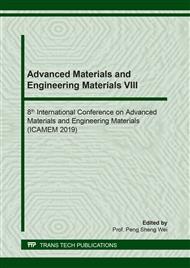p.132
p.137
p.144
p.152
p.157
p.163
p.171
p.176
p.182
Study on the High Temperature Creep Behavior of 30Cr25Ni20 Heat-Resistant Steel
Abstract:
The high temperature creep test of heat-resisting steel 30Cr25Ni20 for automobile exhaust manifolds was carried out, and the creep strain-time curves at 650°C and 700°C in the different loads were obtained. The effects of different creep temperature and stress on creep life of materials were studied. The microstructure of the fracture after creep was observed by scanning electron microscopy. Microstructures before and after creep at different temperatures were compared by optical microscopy. The results show that the creep fracture life of heat-resistant steel decreases with the increase of stress at the same temperature. The creep fracture life decreases with the increase of temperature at the same stress, too. The fracture of heat-resistant steel shows good high temperature plasticity and a ductile fracture after creep. The fracture dimples become deeper with the increase of stress. At 650°Cand 700°C, the stress exponent is 8.6 and 6, respectively. When the sample was subjected to high temperature creep at 700°C, the precipitates increase obviously and the reticular structure became very large. At this point, the internal structure of the material is destroyed, and the matrix structure becomes unevenly distributed. The failure of the internal structure leads to the dramatic increase of the creep strain, and the failure of the internal structure will be more serious with the deformation of the sample.
Info:
Periodical:
Pages:
157-162
Citation:
Online since:
July 2019
Authors:
Price:
Сopyright:
© 2019 Trans Tech Publications Ltd. All Rights Reserved
Share:
Citation:


